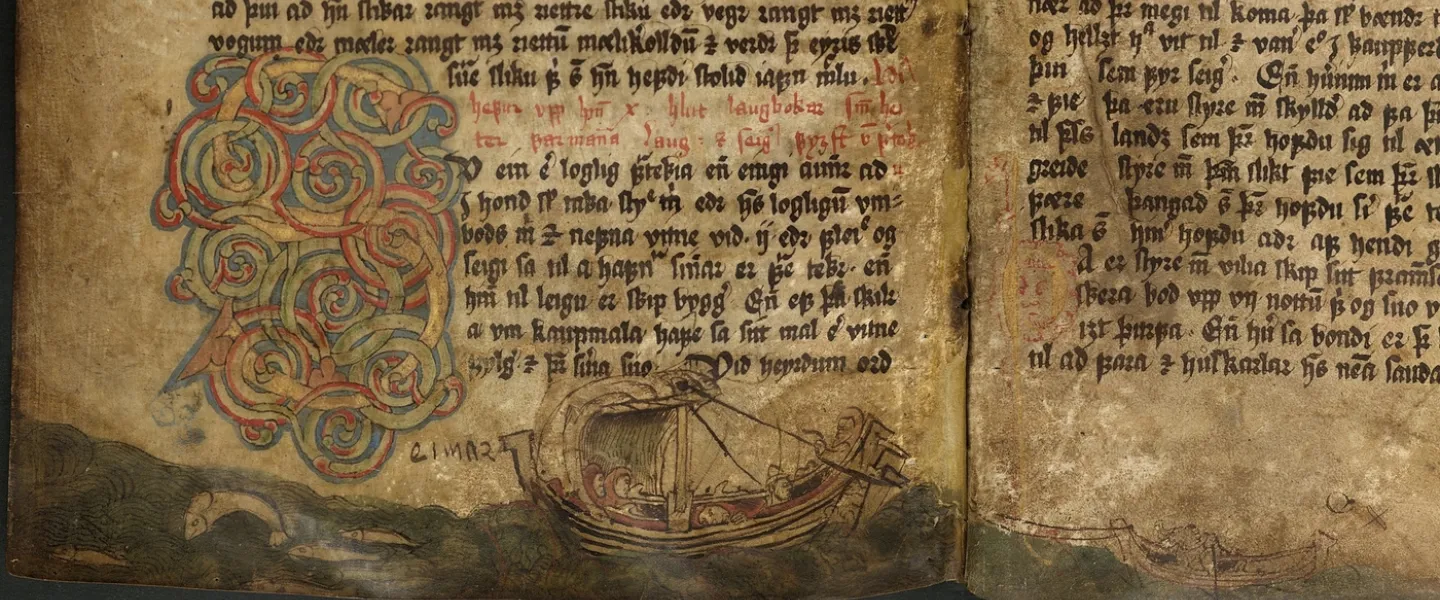
"Grettir said that his temperament had not improved and that he had much more trouble restraining himself and was much quicker to take offence than before. He noticed a marked difference in that he had grown so afraid of the dark that he did not dare to go anywhere alone after nightfall – he thought he could see all kinds of phantoms."
This is a quotation from The Saga of Grettir the Strong, describing how the protagonist is tormented by darkness. The reader sees clearly how anxiety, fear and hallucinations haunt Grettir Ásmundarson, a man with the physical strength to take on almost anything, except the dark.
Anyone who reads will have noticed that darkness can play a significant role in staging and narrative, but also that it has symbolic significance in literature and language. For example, this description of the interplay between the opposites of dark and light uses poetic imagery that could almost be taken from modern literature.
"Like the dark mists that are drawn up out of the ocean, dispersing slowly to sunshine and gentle weather, so did these verses draw all reserve and darkness from Þórdís’ mind and Þormóður was once again bathed in all the brightness of her warm and gentle love."
Exploring the darkness in Njál's Saga, Egil's Saga, Laxdæla Saga and other Icelandic sagas
All this darkness in the Icelandic sagas is now the subject of a research project at the University of Iceland by Jan Alexander van Nahl, senior lecturer in medieval Iceland studies.
"I didn't grow up in Iceland, so perhaps the dark of the Icelandic winter is particularly striking for me," says Jan Alexander, who also noticed the darkness in the Icelandic sagas, which he has been reading for a long time both for pleasure and scholarship.
Jan Alexander was born in Bonn in Germany, but since emigrating to Iceland has become proficient in the Icelandic language. He has spent many years exploring the role of medieval studies in contemporary society, having absorbed himself in the Prose Edda. The Prose Edda is the masterpiece of Snorri Sturluson, one of the Sturlung clan and a man who lived through a period of enormous unrest in Iceland in the 13th century. The significance of Snorri's Edda cannot be overstated, since it is the most valuable surviving source of Norse mythology.
Jan Alexander has published two books about Snorri and a book about the Kings' sagas. He has also written a book about digital humanities, a textbook on Norse medieval studies, and a book about Iceland and the Icelandic language for German tourists.





